Tag: Training Tips
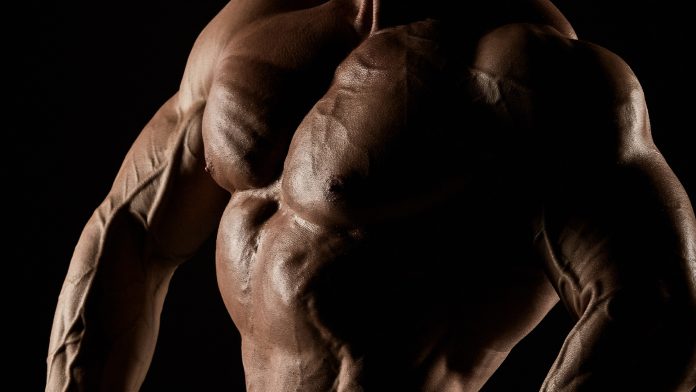
How To Build A Chest Like Jay Cutler
These Are Jay Cutler’s Favorite Chest Building Exercises.
A chiseled chest has been the symbol of machoism for a long time. Jay Cutler, the 4X Mr. Olympia, is the poster boy for a broad chest and a narrow waist. There are no doubts Jay’s chest was a big factor in getting him the title of the best bodybuilder in the world.
Jay Cutler’s chest training program is different from what you might expect when you look at him. He follows a conservative approach when it comes to working out. He relies heavily on machines for his training. This mass monster believes eliminating the use of barbells reduces the chances of injury in the gym.
1. Hammer Strength Chest Press – 3 Sets 10 Reps
Jay stays away from lifting heavy barbells. This is a smart move especially if you’re prepping for a contest. An injury is the last thing you want while training to get on stage. Leverage chest press is a great substitute for the flat bench press.
Since this is a controlled isolation movement, feel free to use heavy weights. Cutler is big on establishing a mind-muscle connection. At the top of the movement, squeeze the living hell out of your pecs.
2. Incline Dumbbell Bench Press – 3 Sets 10 Reps
The upper chest is a weak muscle group for most people. If you’re one of these people, you can make it even worse by not training it often. Incline dumbbell bench press is incredibly effective at targeting your upper pectoral muscles. Follow a complete range of motion and contract your chest with every rep.
Jay doesn’t follow the conventional 12, 10, 8 reps scheme in his workouts. He does consistent 10 reps in all his sets. Although you will be doing the same number of sets in each set, don’t hold back from pushing yourself and increasing the weights.
3. Pullovers – 3 Sets 10 Reps
Most people do pullovers for their back, but Jay does it for his upper pecs. You don’t have to use heavy weights during this exercise. Use moderate weights you can control and perform slow and deliberate reps with. Don’t lock out your elbows during this exercise.
Locking your elbows will engage your back and take all the tension off of your pecs. Lying cross-bodied on the bench during this exercise is more effective than lying straight. In the cross-bodied position, your hips and back are hanging low while your chest is elevated. Doing this helps with a better pec recruitment.
4. Cable Crossovers – 3 Sets 10 Reps
If you want to build a chest like Jay Cutler your chest workouts should be a mix of isolation and compound exercise. Compound exercises help with building the size and strength while isolation exercises help with building muscle definition.
Cable crossovers help with building the striations in your middle chest. Holding and squeezing at the top of the movement will help you get the chest separation and definition. Stand with your chest out and back arched while performing this exercise.
5. Dips – 3 Sets 10 Reps
Dips can prove to be a brutal exercise after what you’ve already put your chest through. This exercise is great for building your lower pecs and improving the definition in your chest. Maintain a full range of motion while performing dips.
If the bodyweight version of this exercise is too easy for you, feel free to use weights. Don’t just go through the motions while performing dips. Hold and squeeze your pecs at the top of the movement.
According to you which athlete has the best chest? Let us know in the comments below. Also, be sure to follow Generation Iron on Facebook and Twitter.
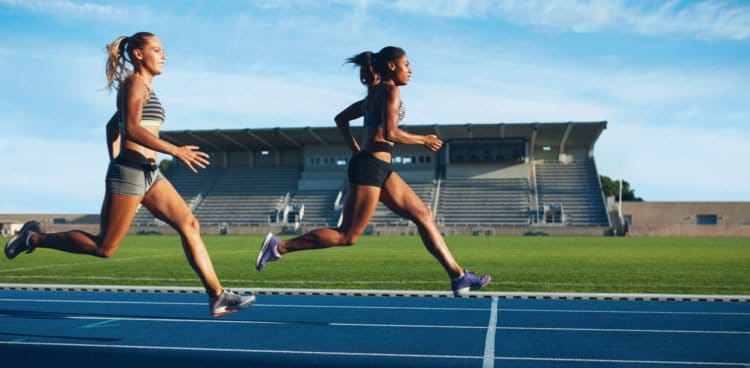
Should You Train Fast v Slow: Fast Twitch vs. Slow Twitch Breakdown
Here is a breakdown on if you should train fast or slow.
So the skeletal muscles are comprised of three types of fibres, there is type I, also known as slow-twitch and type II also referred to as fast twitch, and there are types of type II (which I will explain below).
Slow Twitch (Type I)
Slow twitch fibres are geared to supporting aerobic training and prolonged exercise, so exercises such as long distance running, swimming, cycling and other forms of endurance training.
The Slow Twitch fiber contracts much slower and is more resistant to fatigue and has a quicker recovery time.
Contraction type: slow
Speed: 100 milliseconds
Fast Twitch (Type II)
There are actually two types of fast twitch fibres, there is Type IIA and Type IIX (also referred to as Type IIB).
Type IIA
Essentially this is an intermediate muscle fiber and a hybrid of the two others,as it is a mix of Type I and Type IIX(IIB), so it is great for aerobic and anaerobic training such as weight training, powerlifting, plyometric movements and agility training.
This fiber contracts moderately and doesn’t become fatigued as quickly or take as long to recover.
Contraction type: fast
Speed: 50 milliseconds
Type IIX /IIB
Fast twitch fibres are geared to supporting anaerobic training and produce more power and force focused movements such as weight training, sprinting, and agility training.
Type IIx is also the purest form of fast twitch fiber, the quick contractions also means that it gets fatigued much quicker and has a longer recovery time.
Contraction type: very fast
Speed: 25 milliseconds
So now we know what muscle fibres are available to us, should this affect how you should train? Should different muscle groups be trained differently?
squats, medicine ball
How to train Type I
The best and most effective way to train Type I is typical endurance training, and when in the gym this would be higher reps with lighter weights.
How to train Type II
Type II is definitely the fiber you want to hit if you want to increase strength, and the best way to do that is heavier weights and less reps.
But things are really not that cut and dry, as all of your muscles are comprised of both fast and slow twitch muscle fibers.
So let’s break it down.
What percentage of fast twitch and slow twitch are present in different muscle groups, the table below with provide more details:
Muscle Group
Fiber Type
Rep Range
Chest
Approx 60% fast twitch fibers
Low to medium rep range
Triceps
Approx 67% fast twitch fibers
Low rep range and go heavy
Shoulders
Approx 60% slow twitch dominant
Medium to high rep range
Quads
Vastus Lateralis muscle is about 69% fast-twitch and 32% slow-twitch fibers.
Low rep range and go heavy
Biceps
60% fast-twitch and 40% slow-twitch
Low rep range and heavier weights
Abdominals
55-58% slow-twitch, and 42-45% fast twitch.
MIx it up, vary between light weight and high reps to heavy with low rep range
Calf (gastrocnemius)
The Gastrocnemius (calf) muscle is about 50% fast-twitch fibers and about 50% slow-twitch fibers.
MIx it up, vary between light weight and high reps to heavy with low rep range
Calf (Soleus)
80% slow twitch
Medium to high rep range
Back
54-58% slow twitch
Low to medium rep range
Deltoid
Over 50% slow twitch
MIx it up, vary between light weight and high reps to heavy with low rep range
One study concluded that ‘the percentage of type I fibres was higher than 50 in the deltoid and gastrocnemius, lower than 50 in the rectus femoris and about 50 in the biceps brachii.’, so these numbers are a guide and not concrete by any means, this can change per individual.
In conclusion, these figures are great to have but essentially muscle fibers can be trained to switch as one study concluded that a ‘shift from type II to type I fibers may occur under longer duration, higher volume endurance type events.’
And age also plays a part in switching muscle fibers as the percentage of fast twitch muscle fibers in your body starts to decrease after age 30.
The key point here is that when training, ensure you keep a wide variety of rep ranges, and vary your weights from light to heavy, rather than specifically targeting only fast or slow twitch fibers.
So until next time, keep pumping!
Sources
https://academic.oup.com/ptj/article/81/11/1810/2857618
https://www.hindawi.com/journals/bmri/2016/5946520/
https://www.ncbi.nlm.nih.gov/pmc/articles/PMC521732/
https://pubmed.ncbi.nlm.nih.gov/4109253/
https://www.jns-journal.com/article/0022-510X(71)90215-2/fulltext
https://link.springer.com/article/10.1007/BF01042285
https://pubmed.ncbi.nlm.nih.gov/16795030/
https://pubmed.ncbi.nlm.nih.gov/23558383/
https://europepmc.org/article/med/870781
https://pubmed.ncbi.nlm.nih.gov/12811774/
https://pubmed.ncbi.nlm.nih.gov/161688/
https://pubmed.ncbi.nlm.nih.gov/123895/
https://pubmed.ncbi.nlm.nih.gov/2960128/
https://pubmed.ncbi.nlm.nih.gov/9617724/
https://pubmed.ncbi.nlm.nih.gov/21912291/
https://pubmed.ncbi.nlm.nih.gov/21912291/
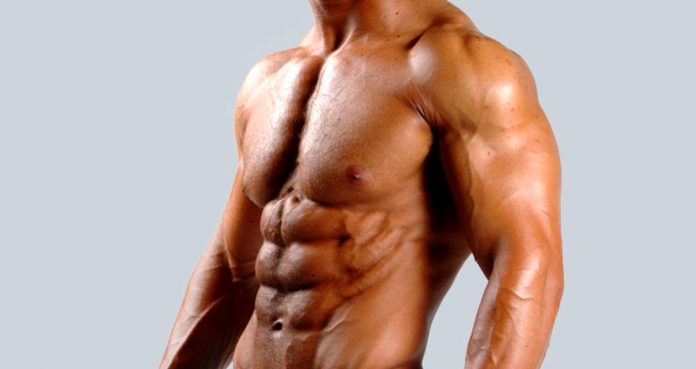
The Benefits of Stretching and Why You Should Stretch Before, During & After Your Workouts
Why Stretch?
Almost everyone to some extent knows and understands the importance of stretching, especially in bodybuilding but still don’t do it. Stretching is one of the most overlooked aspects of training and most people treat it as accessory work.
In this article, we’ll be focusing on fitness and bodybuilding athletes and the benefits of stretching for them. Many people think stretching is only for yoga practitioners and does nothing for athletes.
The stretching exercises athletes perform before, during and after workouts are meant to stretch the connective tissues which surround the muscles. These connective tissues are responsible for holding the muscles together and are the resistance that stops the muscles from expanding.
How Connective Tissues Work
The connective tissues form the fascia which tightly hugs and acts as a wall around the muscles. These walls are meant to stop the muscles from deforming while you go about doing your work.
While the fascia does a great job of keeping the muscles together, it acts as a hindrance for bodybuilders who want their muscles to grow bigger. The pump you get during a workout is your muscle tissues pushing against the fascia because of the blood which enters into the muscles and gives you a tight feeling.
Benefits of Stretching
While you could stretch at any time throughout the day, the best time for an athlete to stretch is during the workouts. Stretching after a workout is a great way to end your training and can help with recovery.
Before a Workout
Stretching before a workout won’t do a lot for you and is only helpful in warming up the muscles. You don’t have to stretch out all the muscles before your workout. Stretching only the target muscles is enough to make the most of your workouts.
During a Workout
Stretching during training can be incredibly effective for muscle growth. Posing and stretching after a working set helps in building a mind-muscle connection which combined with visualization techniques can improve the shape of your muscles.
Stretching in between sets also expands the fascia and pulls the connective tissue and muscles apart which enhances muscle separation and definition.
After a Workout
At the end of a good workout, your muscles should be filled with blood and lactic acid and should be feeling tight and pumped. Post-workout is a great time to stretch as the connective tissue is already being stretched by the excess blood in your muscles. Manually stretching the muscles at this point increases the muscle fiber growth potential.
Types of Stretching
Active Stretching
Active stretching involves using weights as resistance in the exercises which work the muscles in the fully stretched range of motion. To emphasize the stretch in these exercises, you need to hold the weights at the bottom of the movement for a couple of seconds.
Some examples of active stretching are dumbbell pullovers, flyes for chest, preacher curls for biceps, barbell lunges for quads, barbell stiff-legged deadlifts for the hamstrings, and standing calf raises for the calves.
Static Stretching
Static stretching is the traditional form of stretching which most people are familiar with. In static stretching, you use your own bodyweight to stretch the muscles. You stretch your muscles to a point of discomfort and hold the position for 30-60 seconds.
For example, to stretch your hamstrings, maintain a slight bend in your knees and touch your toes with your fingers. Hold the position until the discomfort in your hams reduces. Make sure you don’t push yourself too hard in the beginning as there are high chances of muscle pulls and tears.
Stretching in between sets takes no extra time and stretching after a workout can take 5-10 minutes. The benefits you’ll reap will far outweigh the time you’ll be putting in. We encourage everyone to incorporate stretching into their training routines.
How often do you stretch? Let us know in the comments below. Also, be sure to follow Generation Iron on Facebook and Twitter.
*Header image courtesy of Envato Elements.
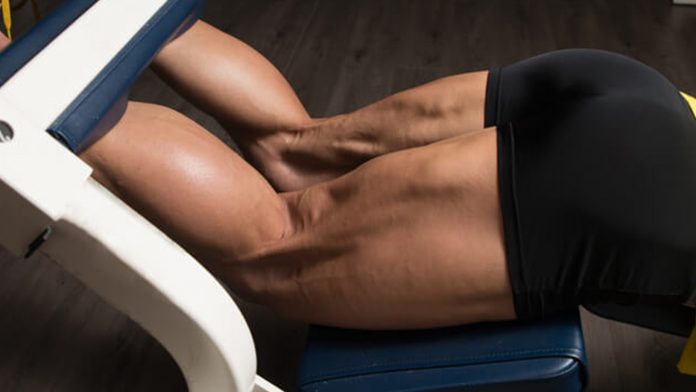
The Ultimate Hamstrings Workout
Follow This Workout For Shredded Hamstrings
Hamstrings are one of the weakest muscle groups for most people. It is hard to establish a mind-muscle connection with your hamstrings since they are at the back of your legs and you can’t see them in the mirror while training.
Hamstrings are one of the most stubborn muscles groups. If you have genetically weak hamstrings or are lagging in the department, you need to show them some extra love. Muscular hamstrings can significantly add to the size of your legs.
Leg Curls – 3 Sets 15 Reps
Starting with an isolation exercise is a good idea as it pre-exhausts your muscles. By pre-exhausting your muscles you can achieve the same result while lifting relatively lighter weights.
Using a cable leg curl machine helps you in maintaining constant tension on your hamstrings throughout the movement. You don’t need to go super heavy while performing this exercise. Pause and squeeze your hams at the top of the movement.
2. Romanian Deadlifts – 3 Sets 10 Reps
Romanian deadlifts are a compound exercise and will help you in building strength and size in your hamstrings. This exercise is different from the orthodox deadlifts as these primarily target your hamstrings, while the normal deadlifts target your back.
Keep a slight bend in your knees while performing the Romanian deadlifts. Think of your hams as chains used for lowering and lifting your back. Push back your hips while lowering the weights so all the tension is placed on your hamstrings.
3. GHD Hyperextensions – 3 Sets 15 Reps
GHD hyperextensions are an exercise brought into the limelight by CrossFit. Maintaining a full range of motion is key to performing this exercise. If you find the bodyweight version of this exercise to be easy, use weights to add resistance.
If you don’t have an access to a GHD bench at your gym, you can use a flat bench for this exercise. Place your knees at the top of the bench and ask someone to sit on your calves while you perform the exercise.
4. Jefferson Squats – 3 Sets 12 Reps
[embedded content]
You have been missing out on a lot if you’ve never tried this exercise. Jefferson squats will set your hams and glutes on fire. The Jefferson squats might look a little awkward at first, but you will dig the results.
It is a wide-stance deadlift where you hold the barbell between your legs with one hand in front of your body and one hand behind it. The better you become at doing Jeffersons, the more proficient you will be at squatting.
5. Good Mornings – 3 Sets 12 Reps
Good mornings are an excellent finishing exercise for your hamstrings. Most people make the mistake of going too heavy on this exercise. Use weights you can handle while keeping constant tension on your hams.
Maintain a slight bend in your knees and an arch in your back. Push back your hips on the way down and squeeze your hams at the bottom of the movement. Don’t rest by standing upright. Maintain constant tension by stopping a couple of inches from the starting point.
Who do you think has the best hamstrings? Let us know in the comments below. Also, be sure to follow Generation Iron on Facebook and Twitter.
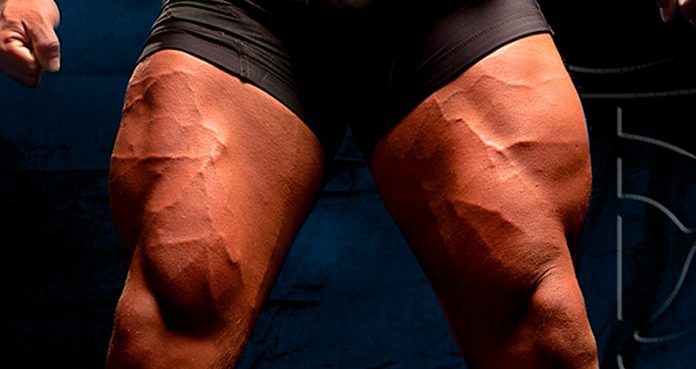
The 4 Effective Leg Building Exercises Which No One Does
Build Monster Legs With These Exercises
A pair of shredded legs is what separates the men from the boys. Most people stick to the same exercises while training their legs and leave gains on the table. All leg exercises aren’t created equal. Some exercises target your wheels better than the others.
A normal leg training session consists of squats, leg presses, extensions, and curls. While there is nothing wrong with these exercises, there are some exercises which can help you in changing your routine and build size and definition in your legs.
Performing the same exercises over and over again can make you hit a plateau. Adding new exercises to your workouts will shock your muscles and will help you in breaking the plateau. Every exercise targets your muscles in a different way which is great for ensuring an overall muscle development.
Platz Hack Squats
The legendary Tom Platz had one of the nastiest legs in the bodybuilding history. He came up with this variation of the hack squats. The Platz hack squats target your outer quad sweep and the teardrop in your quads.
Stand with your heels joined together and your toes pointing outwards. Perform a squat while pushing your knees down and forward. Your heels will come off the base as you squat. As you start pressing up, push onto the outer part of your feet. Doing this will transfer the tension onto the outer quad sweep.
Sissy Squats
Sissy squats have been around since the 1960s, but chances are you’re hearing about them for the first time. Don’t let the name of the exercise fool you. The sissy squats are a great finisher and will fill your quads with lactic acid.
If you’re performing this exercise for the first time, hold onto a squat rack around the hip level or slightly higher. Take a shoulder-width stance and slowly start to lower yourself by bending your knees and pushing them down and forward.
Your back will fall backward while you’re on the descent. Your heels will come off the ground as your knees go down. At the bottom of the movement, your quads should be at least parallel to the floor. Return to the starting position and repeat for reps.
Good Mornings
Good mornings are a compound (multi-joint) exercise which works your hamstrings. Most people make the mistake of going too heavy on this exercise. Good mornings are an exercise which requires a mind-muscle connection.
Stand with a barbell placed across the rear of your shoulders. Keep a slight bend in your knees and an arch in your back throughout the exercise. Push your hips back as you bend your back until it is almost parallel to the floor. Think of your hamstrings as chains used to lower and lift your back.
Step-Ups
Step-ups are a unilateral functional exercise which helps you in training one leg at a time. If you have a weaker leg, unilateral exercises can help you fix this problem as the stronger leg can’t compensate for the weaker one.
Step-ups have many variations and can be adjusted according to your fitness level. Hold a dumbbell in each hand and use your right leg to step onto a knee-to-hip high platform. Bring your left leg up and stand on the platform, then step back with left leg to return to the floor. Both your feet should be on the floor after you step back. Repeat the movement with your left leg and alternate between your legs for the desired reps.
Which day of the week do you train your legs? Let us know in the comments below. Also, be sure to follow Generation Iron on Facebook and Twitter.
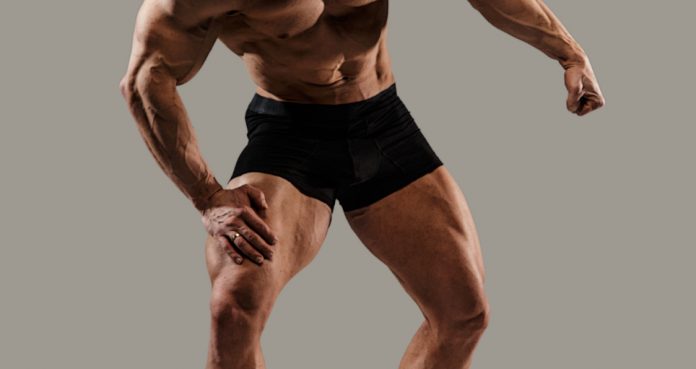
Follow This Leg Busting Workout For Monster Gains
Follow This Leg Busting Workout For Monster Gains
Shredded legs are what separate the men from the boys. Leg day can prove to be the most brutal workout for most people. Limping around after a good leg workout is normal. Legs are one-half of your body and training them can be hard and exhausting.
Look around your gym and you’ll surely see people with muscular upper bodies and tiny legs. Leg days also happen to be the most skipped workouts around the world. We can’t make you love your leg workouts, but we can surely get you results.
1. Squats – 3 Sets – 12, 10, 8 Reps
Squats are a complete leg builder. You can’t expect to build muscle mass in your legs without doing this exercise. Squats are a compound (multi joint) exercise which builds size and strength in your legs. This exercise will also make you stronger at other exercises.
Start your workouts with 12 reps, with every set increase the weights and reduce the number of reps. Make sure you have a complete ‘ass to the grass’ range of motion. Performing partial reps won’t do anything for your legs.
2. Leg Press – 3 Sets – 12, 10, 8 Reps
Leg Press can be incredibly efficient in building size and definition in your legs. This exercise helps you train your legs from different angles by changing your feet position on the platform. Placing your feet high on the platforms train your hamstrings and the lower feet position will train your quads.
Close and wide feet placement targets your outer and inner quad sweep respectively. Leg press is also the most abused equipment in the gym. People load it up with more weights than they can handle. Use appropriate weights and maintain a full range of motion.
3. Leg Extensions – 3 Sets – 20, 15, 12 Reps
Leg extensions are an isolation exercise and help focus on your quads. This exercise helps in maintaining tension on your quads throughout the motion. Establish a mind-muscle connection with your legs and squeeze the hell out of them at the top of the movement.
You don’t need to go super heavy during this exercise. Keep the motion slow and deliberate and target muscle failure at the end of every set. You should be doing both compound and isolation exercises to make the most of your leg workouts.
4. Romanian Deadlifts – 3 Sets – 12, 10, 8 Reps
This exercise targets your hamstrings. Hamstrings can be a little harder to train since you can’t see them in the mirror and it can be a little harder to establish a mind-muscle connection with them. Keep your back arches and maintain a slight bend in your knees throughout this exercise.
During Romanian deadlifts, think of your hamstrings as chains being used to lift and lower your upper body. Using more weights than you can handle can shift the tension from your hams to your back, defeating the entire purpose of this exercise.
5. Leg Curls – 3 Sets – 20, 15, 12 Reps
Legs curls are one of the most effective hamstring exercises. This is an isolation exercise where the entire focus is on your hams. Maintain a mind-muscle connection with your hams throughout this exercise and keep your reps slow and deliberate.
Since your knees are the only joints working during this exercise, going too fast can increase your chances of an injury. Squeeze your hamstrings at the top of the movement and follow a complete range of motion.
6. Standing Calf Raises – 5 Sets – 20, 15, 10 Reps
You need to treat your calves just like any other muscle group. Doing three sets at the end of a leg workout won’t do any good for your calves. Standing calf raises target your gastrocnemius muscle which is the long head of the calves.
If you don’t have a standing calf machine at your gym, you can utilize the smith machine. Just like with all the other exercises, maintain a full range of motion and squeeze your calves at the top of the movement.
7. Seated Calf Raises – 5 Sets – 20, 15, 10 Reps
Most people have tiny calves because they don’t train them well enough. You need to be doing both the standing and the seated versions of the calf raises to train them optimally. The seated calf raises train the short head of the calves known as soleus.
You can try different feet placement to train your calves from different angles. Keeping your toes together and heels apart will target the outer head of your calves and placing your heels together and toes apart will train the inner head.
Which is your favorite leg exercise? Let us know in the comments below. Also, be sure to follow Generation Iron on Facebook and Twitter.
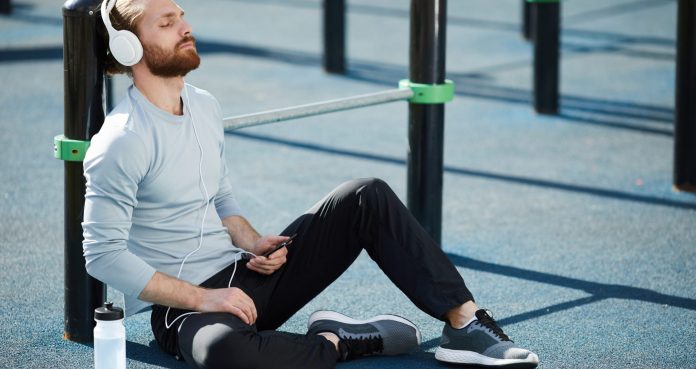
The Visualization Process For High Performance Athletes
This cognitive technique can really work to benefit all of your performance goals.
Many professional athletes in all sports have successfully used the process of visualization to tackle any challenge laid before them. To see your intended goal happen in your head before you actually execute is a great way to start the process of the actual execution. As a powerful and proven tool for athletes in any sport, visualization and the techniques that go along with it can really work to benefit all aspects of your training and performance.
With so many people preaching how to visualize and how to imagine their success, you will hear people mention how you should see it before you do it, imagine you are in that setting and how it feels, and try and put yourself in the mindset of the pressure you will feel in that moment. By visualizing your environment before you actually get there, the allure and overall atmosphere of a high intensity environment will seem second nature to you (1). But learning how to do it can definitely be something of a challenge.
What Is Visualization?
Visualization is an experience and a preparation for the big moment ahead. Also known as guided imagery, this process and technique is sort of a mental rehearsal for what lies ahead. By creating a mental image and nailing down your ultimate goals and intentions, you will start to make that goal and that dream a reality (2).
Focusing on what you intend to do is important and is something not only necessary in sport but also other facets of your life. If you enter a meeting where you seek to pitch a million dollar idea to investors, by visualizing a positive outcome in that meeting, you will feel more relaxed and will be better equipped to execute in that meeting.
For our purposes of sport, if you are facing a monster deadlift in Strongman or a powerlifting competition, seeing everything laid before you can help with execution. Imagine the atmosphere, the cheers, the immense pressure you will be under. See your feet under the bar, your hands on the grip, and maybe even a bead of sweat dripping onto the floor from your head. Imagine how it feels, the weight slowly being lifted off the floor as you look up, that bar trailing your shins, moving past your knees, and reaching your hips. Then think about how you did it, how you are holding that weight knowing you lifted all of it and accomplished your goal before dropping it back down. That is visualization.
Benefits Of Visualization
Improve Focus & Concentration
By taking time away from the distractions of life, you will start to work your mind into focusing on what you care about. By concentrating on one thing, you will start to get better at narrowing down exactly what you want and that will cross over into other areas of focus and concentration.
Promote Relaxation
Finding peace and quiet and exploring your mind is a great way to promote relaxation. By working to achieve your goals and seeing yourself succeed, you will not only help yourself see that performance goal come to life but also feel good knowing you are tackling that overwhelming sense of whatever is bothering you. Eliminate distractions and all that anxiety and find a moment of relaxation for your mental and physical health (3).
Increase Positivity
Leading up to any competition, the nerves really get going and your mind starts to wander, filling your head with all that self doubt. By working to visualize your goal and tackle the issue at hand, you won’t feel all of that negativity and the overwhelming feeling that comes with it. Kick all of that negative self talk and foolish nonsense out of your head and trust that you have worked hard to get to where you are and where you want to be.
Think BIG
Seeing that goal in front of you can help you think bigger. Don’t narrow yourself into a corner because of what you think you can do, but of what you know you can do. If you visualize yourself lifting a set weight, try adding ten or fifteen pounds in your head. It doesn’t have to be an astronomical difference, but just enough to keep you progressing and pushing yourself to be better everyday.
Visualization Techniques
Find a quiet and comfortable spot to really settle in. As a form of meditation let your mind wander, slowly finding your breathing and adjusting to how you want your focus to be. Start to rehearse potential situations in your head as you begin this visualization journey. Where you will be, what you will think about, and how you will execute are all good starting points. Slowly start to create this imaginative world into one of reality as you face the challenge head on. Moving through the motions of what will happen, start to convert those desires and dreams into attainable goals and beliefs. Be sure to breathe, maintain a strong, comfortable posture, and start to make those goals a reality.
Wrap Up
Visualization and the process it entails can greatly benefit your overall performance. By picturing exactly what can and will happen at the time of the event, you will start to feel at peace knowing you have what it takes to do it. The mind has full control of the body and pushing your limits requires just as strong of a mind as it does muscles, joints, and ligaments. Don’t let poor planning hurt your overall goals and really work to achieve greatness by starting to see greatness before you even begin. Give visualization a try and really see your goals become reality.
Let us know what you think in the comments below. Also, be sure to follow Generation Iron on Facebook, Twitter, and Instagram.
*Images courtesy of Envato
References
Munroe-Chandler, Krista J.; Guerrero, Michelle D. (2017). “Psychological Imagery in Sport and Performance”. (source)
Ekeocha, Tracy C. (2015). “The Effects Of Visualization & Guided Imagery In Sports Performance”. (source)
Pelka, Maximilian; Heidari, Jahan; Ferrauti, Alexander; Meyer, Tim; Pfeiffer; Kellmann, Michael (2016). “Relaxation techniques in sports: A systematic review on acute effects on performance”. (source)
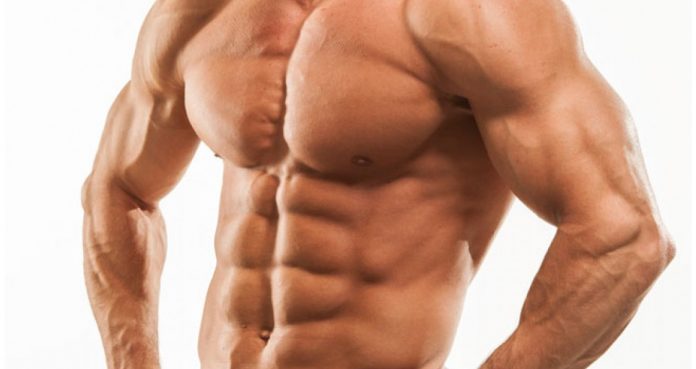
How To Reduce Your Waist Size Without Doing Ab Exercises
Reduce Your Waist Size With This One Trick
Let’s face it; many people get a gym membership to lose weight and to fit into smaller clothes. Following the advice of the broscientists, these people spend most of their time on the cardio equipment. Since you’re reading this article, chances are you’re one of them.
It isn’t long before they lose the motivation and return to their old ways. They blame their genetics for their inability to lose the excess body fat. The ‘too busy to workout’ excuse follows.
The others don’t like spending their time on the dreaded treadmill or doing crunches. Hardly do they know, it’s not their genetics. It’s the lack of knowledge which makes them quit working out altogether.
Changes In Bodybuilding In The Recent Eras
Have you wondered how bodybuilders in the golden era had small waists even when there was no fancy electronic cardio equipment? They used techniques which are long forgotten but were way more efficient than the ones employed by the pros now.
Unlike the bodybuilders today, the golden era bodybuilder focused primarily on symmetry and maintaining a narrow and tight midsection. Most of the current pro bodybuilders focus on getting big and turning into mass monsters.
The Vacuum Pose
If you haven’t heard of this, you’re already missing out. Frank Zane brought this technique into the mainstream by performing this pose on the stage. Before him, the athletes usually performed this pose in the gym as an exercise.
In this pose, you have to suck in your stomach to your spine to make it look like it has completely disappeared. When you hit the vacuum pose, you’re contracting your transverse abdominis (TVA).
The TVA runs across your waist just like a weight belt. It works like a weight belt in your daily operation. You can only perform this kind of thing with your belly.
TVA lies under the rectus abdominis and obliques and is one of the deepest abdominal muscles. Unlike most other muscles, it doesn’t connect to or move bones closer together. Many of TVA’s fibers don’t attach to the bone at all.
You need to take baby steps when it comes to performing this exercise. It will also need a lot of patience and persistence if you have never tried hitting this pose before.
There are four steps to mastering this exercise. In this article, we will take you through each step assuming you’ve never tried this exercise at this point. Each step will be harder than the previous one.
Don’t get intimidated by the four steps; you need to take one step at a time. Once you master one level the next will be relatively easy to perform and will be more efficient than the previous step in achieving your goal of a narrow waist.
Supine Vacuum
[embedded content]
This is the first step in performing the vacuum. It’s also the easiest way to suck in your stomach since the gravity will be your friend in this exercise. Confused? Let us explain.
Lie on your back with your knees bent, so your feet are touching the floor. This will help you isolate and focus on your abdominal. Once you’ve assumed this position, exhale all the air you can. This will raise your diaphragm and shrink your stomach.
This is where your TVA will have the maximum contraction, and you’ll be able to hit the vacuum pose. In the beginning, you might be unable to see or feel the vacuum, but it will come with time.
Hold your breath and perform this exercise for 15 seconds in the beginning. As you get better with time, increase the contraction time to 60 seconds. Take small breaths in between if you’re unable to hold your breath.
Quadruped Vacuum
Once you’re confident with your abilities at the supine vacuum and can perform it at will with no problems, it is time to the move on to the quadruped vacuum. If you’re performing each variation every day, it should take you a couple of weeks at most to perform them optimally.
The quadruped vacuum is called so because you perform them while having four touch points with the ground. In this exercise, you’ll be working against the gravity, and this makes this exercise harder than the previous variation.
Begin in a knee push up position so your shoulders are vertically over your elbows and your wrists and hips are over your knees. Follow the same steps as in the supine vacuum; exhale and suck in your abdominal.
This exercise is harder than the supine vacuum. So, if you were doing 60 seconds on the supine version, you should start with 30 seconds and work up to the 60 seconds mark.
Seated Vacuum
We know what you’re thinking. Isn’t the anti-gravitational version harder than the sitting on your ass version? No, it’s not because many stabilizing muscles come into play while performing this exercise.
Sit on a stable surface without leaning on to anything. Taking the support of a wall or any other surface will reduce the effectiveness of this exercise.
Exhale, pull in your navel and hold it for 30 seconds. Work your way up to 60 seconds as you get better at this exercise. Also, use unstable surfaces like a swiss ball to make this exercise harder.
Functional Vacuum
This is when you become a pro at hitting the vacuum pose. You’ll be so good you could perform it at any time, anywhere. Functional vacuum is the real life variation of this exercise.
You could be performing the vacuum pose in a subway, on your office desk or anywhere else without the people beside you knowing it. As you get better at the vacuum poses, you’ll be able to hold them for long durations.
This can result in a tighter, narrower and firmer midsection. Once you’re at this stage, you’ll find yourself vacuuming throughout the day. You won’t have to wait for long before your waist size drops.
Which ab tightening technique works the best for you? Let us know in the comments below. Also, be sure to follow Generation Iron on Facebook and Twitter.
*Header image courtesy of Envato Elements.
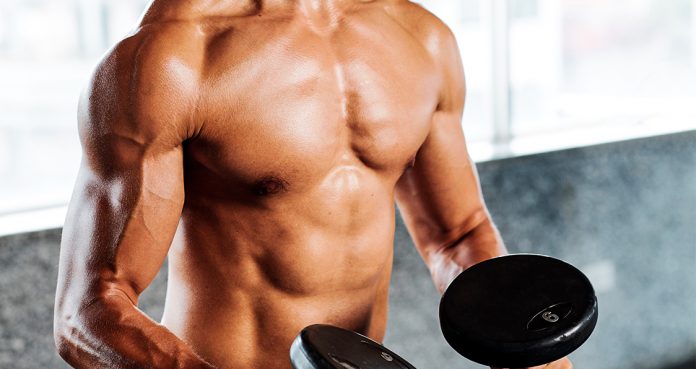
Turn Your Triceps Into Horseshoes With This Workout
A Triceps Busting Workout
It is no surprise most men are obsessed with the size of their arms. For most of these men, the obsession fades away after training their biceps. A triceps workout shouldn’t be overlooked as they are half of your arms.
When you flex your triceps, it should look like a horse kicked you in the back of your arm. If you train your bis and tris on the same day and your triceps are lagging as compared to your biceps, you should consider training them at the beginning of your workouts.
1. Straight Bar Cable Pushdowns – 4 Sets 20 Reps
The straight bar cable pushdowns is an isolation exercise which will get the blood flowing in your triceps and will get you a good pump. The high volume will help you in pre-exhausting your triceps, so you don’t have to use super heavyweights.
In all the triceps exercises, keep the reps slow and controlled. Pin your elbows to your sides and complete a rep. Exhale, pause and squeeze your triceps at the bottom of the movement. Slowly return to the starting position and repeat without using any momentum.
2. Single Arm Overhead Dumbbell Extensions – 3 Sets 15 Reps
Your triceps consist of three heads; lateral, medial and long. You need to train all of them equally to ensure an overall development. Overhead movements like the single arm overhead dumbbell extension work the long head which is the most stubborn of the three triceps heads.
Hold a dumbbell in your right hand and extend your right arm over your right shoulder. Stick your right bicep to your right ear and slowly lower the dumbbell towards your left shoulder. Return to the starting position and squeeze your triceps at the top of the movement.
3. Skull Crushers – 3 Sets 12 Reps
Skull crushers are one of the most effective exercises when it comes to building size and definition in your triceps. The skull crushers work your long triceps heads. If you’re trying this exercise for the first time or are attempting a PR, make sure you have a spotter.
Lie on a flat bench with your face towards the ceiling and arms extended over your shoulders. Your elbows should be in line with your shoulders and pinned at this position throughout the exercise. Slowly lower the bar so the barbell is an inch away from your forehead. Return to the starting position and flex your triceps.
4. Dumbbell Kickbacks – 3 Sets 12 Reps
Dumbbell kickbacks work the lateral and medial heads of your triceps. Most people make the mistake of going too heavy on this exercise. Use a weight which you can handle and can maintain a full range of motion.
Hold a dumbbell in your right hand, place your left foot in front of your right foot while maintaining a slight arch in your back. Pin your right elbow to your side and bring the dumbbell to your chest. Extend your elbow so your arm is fully extended and flex your triceps at the bottom of the movement.
5. Close Grip Bench Press – 3 Sets 10 Reps
Close grip bench press is a compound exercise which helps in building overall strength and size in your triceps. The close grip bench press is a variation of the normal grip bench press which works your chest.
While performing the close grip variation, grab the barbell just outside your chest. Keep your elbows and forearms parallel to each other throughout the exercise. Doing this will recruit your triceps in place of your chest.
6. Superset – Diamond Push-ups / Bodyweight Dips – 4 Sets 15 / 15 Reps
The diamond push-ups and dips superset is the last exercises in this triceps workout. This superset will smoke your triceps if they aren’t already. In the diamond push-ups, place your hands under your chest so that your index fingers and thumbs are touching to form a triangle.
After you have completed 15 reps on the diamond-pushups, move onto the bodyweight dips without taking any rest in between. In the bodyweight dips, your chest should be in line with your hands at the bottom of the movement. In both the exercises, pause and squeeze your triceps at the top of the movement.
Which is your favorite triceps exercise? Let us know in the comments below. Also, be sure to follow Generation Iron on Facebook and Twitter.
*Header image courtesy of Envato Elements.
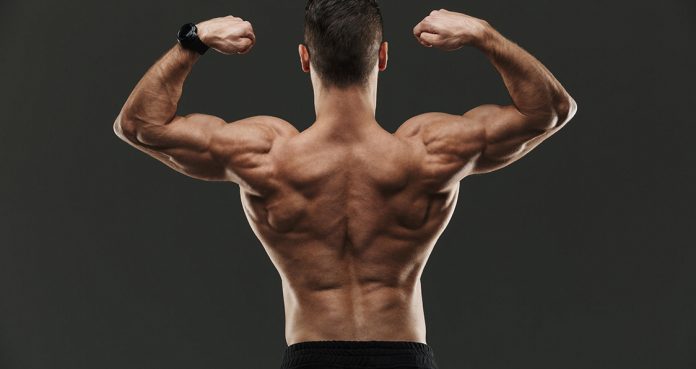
The 10 Best Back Exercises For Men
The Ultimate Back Exercises
A shredded back is what separates the men from the boys. A good back training session should be as brutal as a hardcore leg day. You should be running on fumes by the end of your back workouts.
If you want a cobra back, you need to constantly shock your muscles with different exercises. Your back is one of the biggest muscle groups and you need to target it from every angle for optimal results. We have put together the list of back exercises you can try during your next workout.
1. Pull-Ups
Pull-ups are one of the best back workouts. Arnold Schwarzenegger swore by them and performed 50 reps of pull-ups at the beginning of his back workouts. If bodyweight pull-ups are too easy for you, try the weighted version.
2. Seal Rows
Seal rows are an isolation exercise which works your lats. Lie facedown on a bench and perform barbell rows. Doing so will keep you from using your secondary muscles and momentum to lift the weights. You can also perform this exercise on an incline bench to target your lower lats.
3. Pull-Overs
Pull-overs are one of the most underutilized exercises. This exercise is incredibly effective in building a V-taper. Keep your elbows locked out throughout the movement and maintain a full range of motion.
4. T-Bar Rows
Rowing exercises like the T-bar rows help in building the thickness in your back while exercises like pull-ups and lat pull-downs help with broadening your back. If you don’t have an access to a T-bar row machine at your gym, use a barbell for this exercise.
5. Lat Pulldowns
Lat pulldown is a textbook back exercise. It is great at targetting your lats. Most people make the mistake of going too heavy on this exercise. Make sure you sit straight and don’t use momentum to bring the bar down.
6. One Arm Cable Rows
Using cables in your exercises help you in maintaining constant tension on your target muscles. One arm cable rows will help you in isolating your lats. You can perform this exercise while standing or seated.
7. Barbell Rows
Barbell rows are a compound exercise and will help in building muscle mass and strength in your back. Keep an arch in your back while performing this exercise. Bring the bar to your lower abs at the top of the movement.
8. Wide Grip Seated Cable Rows
Wide grip seated cable rows will add to the width of your back. Don’t lean back while performing this exercise. You could also try the underhand grip or a different cable attachment.
9. Dumbbell Rows
Dumbbell rows are incredibly effective at building size, definition, and thickness in your lats. You can perform the single-arm or the double-arm variation of this exercise. Using lifting gear like lifting straps can help you lift more weights as it eliminates your grip.
10. Deadlifts
We saved the best for the last. Deadlift is a compound exercise which should be a part of your back workouts. It is best to perform this exercise at the beginning of your workouts when you’re fresh.
Which is your favorite back exercise? Let us know in the comments below. Also, be sure to follow Generation Iron on Facebook and Twitter.
